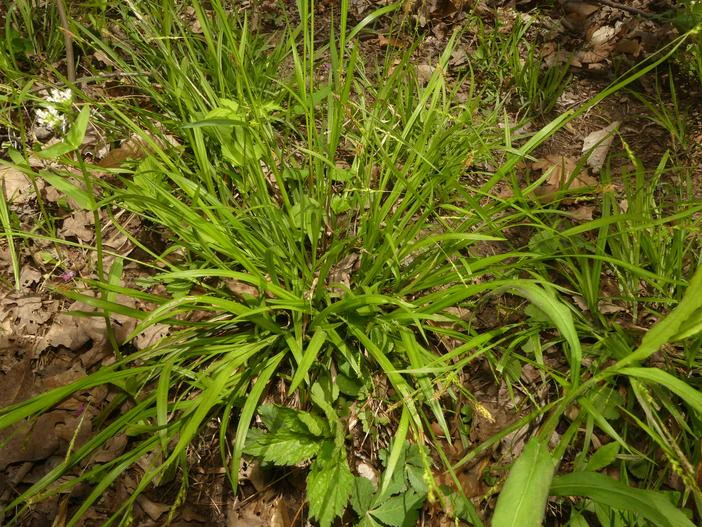Creeping Sedge
(Carex laxiculmis)
Creeping Sedge (Carex laxiculmis)
/
/

Shaun Pogacnik
CC0
Image By:
Shaun Pogacnik
Recorded By:
Copyright:
CC0
Copyright Notice:
Photo by: Shaun Pogacnik | License Type: CC0 | License URL: http://creativecommons.org/publicdomain/zero/1.0/deed.en | Uploader: Nonenmac | Publisher: Wikipedia Commons





























Estimated Native Range
Climate Requirements for Murray, Utah
| This Plant | Your Site | Plant Suitability for Your Location | ||
|---|---|---|---|---|
| • Precipitation | 29" - 76" | 18" | Your precipitation may be insufficient for this plant. Irrigate N" / year. | Irrigate N" / year |
| • High Temp. | 72°F - 92°F | 93°F | Your summers may be too hot for this plant. | Too hot |
| • Low Temp. | -2°F - 39°F | 20°F | Your winter temperatures are normal for this plant | Excellent |
This plant should grow well at your location with about N inches per year (Y minutes per month) of irrigation.
Summary
Carex laxiculmis, commonly known as creeping sedge, is a perennial herbaceous plant native to rich, moist woodlands, and shady stream banks in central and eastern North America, including Ontario, Canada. It typically forms dense clumps reaching 0.5-1 feet in height and width. Creeping sedge has grass-like leaves that are blue-green in color, providing a unique texture and hue to shaded garden areas. It produces inconspicuous greenish-brown flowers in late spring to early summer, which are not particularly showy but add to the plant’s naturalistic appeal.
Creeping sedge is valued for its ability to thrive in shaded conditions where many plants struggle. It is often used as a ground cover in woodland gardens, shaded borders, and naturalized areas. Its preference for moist environments makes it suitable for planting near water features or in rain gardens. The cultivar ’Hobb’, known as Bunny Blue, is sought after for its attractive blue foliage and is available from commercial nurseries. Carex laxiculmis requires consistent moisture and can tolerate a range of soil types, provided they have good organic content and adequate drainage. While it prefers part shade to full shade, it is adaptable to various light conditions. It is generally low-maintenance but can be susceptible to leaf spot diseases in overly wet conditions.CC BY-SA 4.0
Creeping sedge is valued for its ability to thrive in shaded conditions where many plants struggle. It is often used as a ground cover in woodland gardens, shaded borders, and naturalized areas. Its preference for moist environments makes it suitable for planting near water features or in rain gardens. The cultivar ’Hobb’, known as Bunny Blue, is sought after for its attractive blue foliage and is available from commercial nurseries. Carex laxiculmis requires consistent moisture and can tolerate a range of soil types, provided they have good organic content and adequate drainage. While it prefers part shade to full shade, it is adaptable to various light conditions. It is generally low-maintenance but can be susceptible to leaf spot diseases in overly wet conditions.CC BY-SA 4.0
Plant Description
- Plant Type: Grass
- Height: 0.5-1 feet
- Width: 0.5-1 feet
- Growth Rate: Slow
- Flower Color: N/A
- Flowering Season: Spring, Summer
- Leaf Retention: Semi-Deciduous
Growth Requirements
- Sun: Part Shade, Full Shade
- Water: Medium, High
- Drainage: Slow, Medium
Common Uses
Bird Garden, Border Plant, Butterfly Garden, Deer Resistant, Drought Tolerant, Erosion Control, Groundcover, Low Maintenance, Potted Plant, Rabbit Resistant, Street Planting
Natural Habitat
Rich, moist woodlands, and shady stream banks in central and eastern North America
Other Names
Common Names: Weak-Stemmed Wood Sedge, Spreading Sedge, Carex À Tiges Faibles
Scientific Names: Carex laxiculmis
GBIF Accepted Name: Carex laxiculmis Schwein.